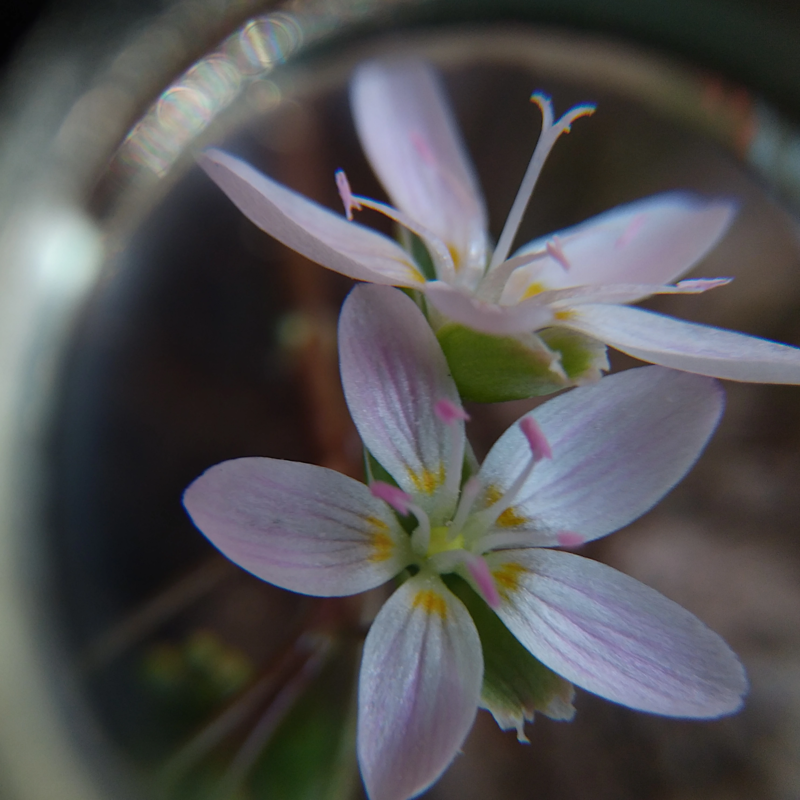
An album of mosses in the late-winter woods.


Old Pa Pitt would be very grateful to anyone who can identify that tiny cone in the middle of the picture.




A cell-phone camera has a very small lens. This can be a liability, but in some cases it can be an advantage. For example, the lens on a cheap phone is small enough to take pictures through a jeweler’s loupe. Above, flowers of Spring Beauty (Claytonia virginica), with the edge of the loupe left in the picture as a kind of visual statement of the theme of this article. Actually, it’s easy to put the lens right in the middle of the loupe and not see the edges at all. Here are some of the other things you can see with a loupe and a cheap little cell-phone camera:

Lichen growing on a twig.

Moss on a log.

Chickweed (Stellaria media). For comparison, here is a fairly close photograph of the entire plant without the jeweler’s loupe:

An entire ecosystem depends on the bark of this one tree in Mount Lebanon: moss, lichens, a bug, and tiny mushrooms. How tiny are they? Below is a left index finger for scale.